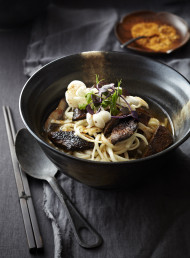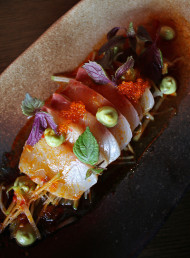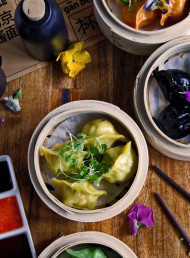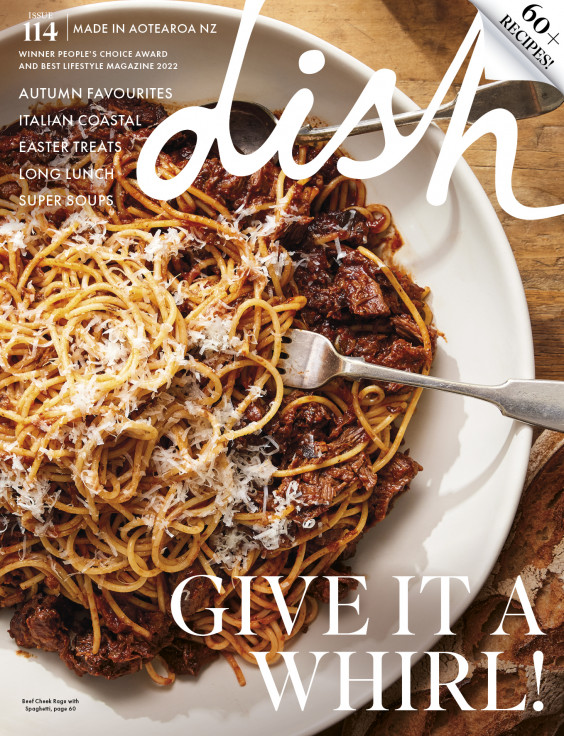A guide to: Asian spices
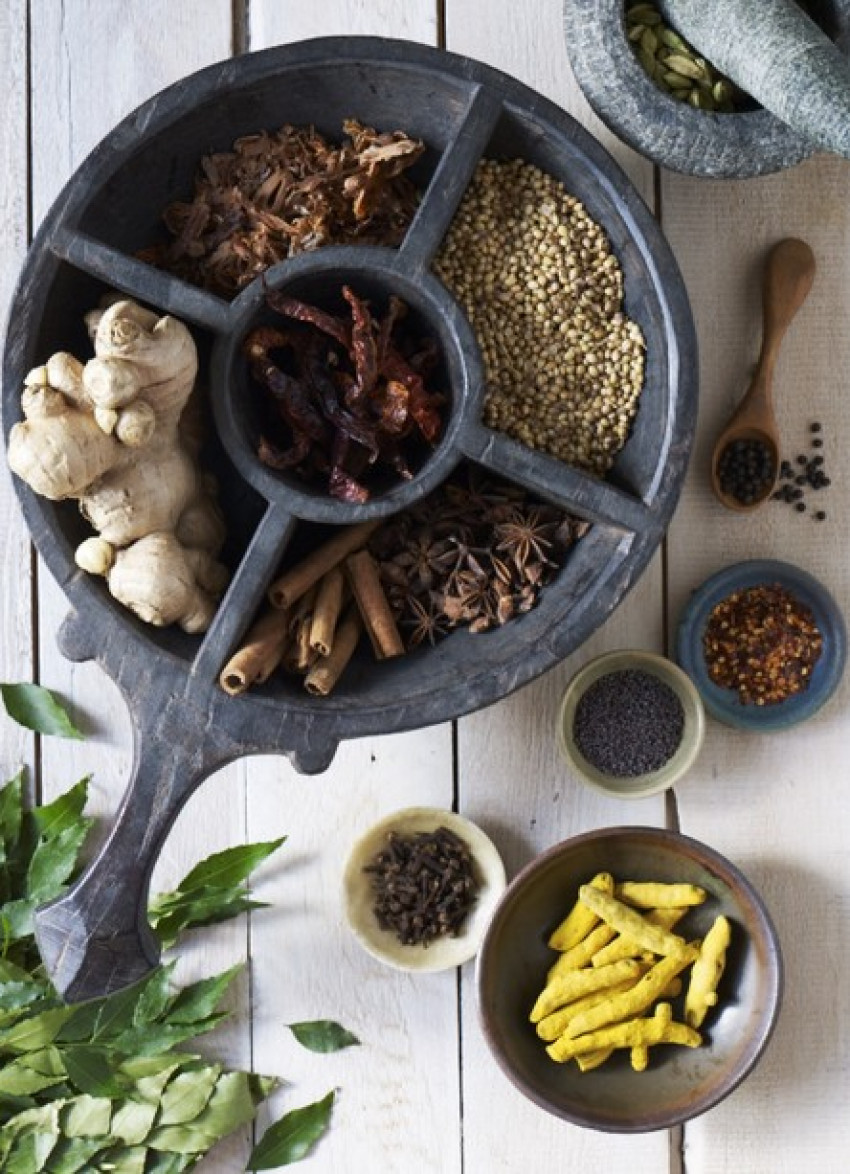
Intense aromas and distinctive flavours are the hallmarks of spices in Asian cooking.
Smell plays a crucial role in how we appreciate flavours, and is a trademark of spices. At their most fragrant when fresh, spices add dimension and variety to food, transforming the simplest ingredients.
Asian cooking encompasses many different spices, from the heady fragrance of cloves, used so often in Indian dishes to the spiciness of pepper, such as Sichuan, in Chinese food. Here is a guide to spices used most commonly in Asian cooking.
Asafoetida – also called Devil’s Dung because of its intensely pungent smell, although it tastes more like a powerful mix of onions and garlic with a hint of truffle. It’s made from the milky sap of a plant from the same family as parsley and fennel. Asafoetida is used extensively in Indian cooking, particularly in dishes using pulses like lentils and beans as its high levels of organic sulphur help reduce their gas-producing effects. The resin is dried and usually mixed with wheat or rice flour (coeliacs beware) and can be found in Indian or Asian emporiums.
Just add one or two pinches in the early stages of cooking along with any other spices. It adds depth of flavour to soups or stews, or when stir-frying vegetables, especially varieties of brassica.
Ajwain – these seeds resemble a cross between tiny fennel, caraway and cumin but taste more like spicy aniseed and thyme. Use ajwain instead of cumin or fennel – sauté in ghee or oil with other aromatics like mustard seed before adding to a curry, soupy stew or vegetables. It can also be toasted like cumin and sprinkled over yoghurt dressings.
Black cumin – also known as shah jeera. These seeds are quite black and finer than normal cumin, with a more complex flavour. They’re used extensively in dishes from Northern India. Not to be confused with nigella, although they look almost identical.
Cardamom pods and seeds – a wonderfully aromatic spice usually sold as green cardamom pods, although they can be bleached a creamy white colour.
Buy the pods as green as possible and use whole by bruising them gently to release their sweet, pungent aroma and add delicious fragrance to rice dishes like kedgeree, rice pudding or pilaf.
Crack the pods to release the tiny grey-brown seeds then grind in a mortar and pestle. Cardamom seeds are also sold whole separately from the pods or ground to a powder. Ground cardamom is used in the popular Indian spice mix garam masala and is ideal for adding to chai tea, lassis, sorbets, curries and sweets.
In India, cardamom pods are commonly chewed as a breath sweetener. You may also find black cardamom in Indian food stores. These are larger and less intense, but with a greater depth of flavour than the green.
Chillies – red chillies have long been a staple condiment in Asian cooking. There are many varieties with different strengths of heat.
Add whole dried red chillies to curries, stews and soups for subtle heat, removing them just before serving. Or soak the chillies for 30 minutes then grind with other spices and condiments to make a flavoursome curry paste. Add powdered red chilli to a dry spice mix or curry powder, or use on its own to add heat and depth of flavour. It can also be used as a condiment at the table. Chilli powder is often a mix of different dried chillies, ground then blended. Chilli flakes can be used in a similar fashion and are especially good folded through vegetables toward the end of cooking or added to a light pasta sauce. They are not a blend, but always one specific type of red chilli.
Cinnamon– the dried inner bark of the cinnamomum tree. When the inner bark is peeled off it curls into the perfumed sticks we know as cinnamon ‘quills’. Considered a warming spice, it has been used for centuries both culinarily and medicinally. Light, subtle and delicately aromatic, cinnamon quills are brittle and break easily. Add them to a slow braise of beef and include in chutneys, pickles, poached and stewed fruits.
You can also buy small pieces of cinnamon bark in Asian specialty stores. These are the brittle off-cuts from the harvesting process and are of lesser quality, but still fragrant. Ground cinnamon is the most common form used in baking. Add it to a fruity breakfast smoothie, or dust over whipped cream.
Cassia or Chinese cinnamon from China and southern Asia is much harder, often made up of a double layer of bark. It has a much stronger flavour too, almost hot and spicy, less sweet.
Cloves – these are the immature flower buds of a tree belonging to the myrtle family. The buds are dried then used either whole, or ground to a powder. Cloves have a sweet, penetrating perfume and distinctive flavour and are used in sweet and savoury dishes. Stick three or four cloves into an onion to enliven a good stock, or use them to enhance meats; corned silverside and Christmas hams are classic examples. Cloves are an essential component in India’s garam masala and Chinese five spice.
Use ground cloves when baking gingerbread, Christmas cake and pudding, mince tarts, date loaf, ginger biscuits and spice cake.
Coriander seeds – a deliciously floral, aniseed-flavoured spice. The seeds can be used whole or ground, as is or toasted, for pickling, or as a main ingredient in spice rubs for meats and fish. The two most common varieties are the small European coriander seeds with flowery, intense flavour, or the much larger Indian variety, which are less intense but equally aromatic.
Cumin – also called jeera. The seed is small and light brown, similar to fennel in appearance. Cumin’s distinctive aroma and flavour with notes of aniseed and fresh pine works fantastically in meat rubs, marinades, sauces and long slow cooked stews and braises.
The Dutch use it to flavour Gouda cheese and it can be used to perfume breads as well. Use cumin whole, or toast in a dry pan over a medium heat until the seeds turn a shade or two darker and release their aromatic scent before grinding in a mortar and pestle or electric spice grinder. Sprinkle into soups and salads, or over yoghurt and dips.
Curry leaves – used a great deal in Indian and Malaysian cooking, this plant belongs to the citrus family. Its name bears little resemblance to its flavour, which is light and subtly earthy with pleasant floral and faint citrus notes.
Curry leaves are best used fresh and can be found in many Asian and Indian grocery stores. They can be used dried too, but with less spectacular results. Add six or seven leaves to stews, curries, vegetable and slow simmering dishes. Sauté at the beginning with curry pastes and other spices as you would bay leaves, and leave in during cooking. Curry leaves can be eaten.
Fennel seeds – sweet, citrus, aniseed aromas distinguish the fennel seed. Use as is, or toast the seeds. Grind to add to spice mixes, or toss into a fish stock. Fennel marries well with fish, but also poultry and
vegetables, especially peppers, tomatoes, aubergines and courgettes. In India it is served to aid digestion and cleanse the palate.
Fenugreek– a bittersweet, astringent spice of the bean family with a distinctive musky, maple-caramel fragrance. The hard yellow seeds are encased in a thick exterior, producing a gel when cracked and soaked overnight, making it ideal for making thick, tasty chutneys or adding to sauces. Fenugreek is a regular component in Indian curry powders.
Five spice – perhaps the most well-known Chinese spice mix, it includes star anise, Sichuan pepper, cassia (cinnamon), clove and fennel; representative of the five flavours: sour, bitter, sweet, pungent and salty. The blend is sold ready ground in supermarkets and Asian food stores, but will be even better if you grind the whole spices freshly yourself. Use five spice as a meat rub, especially with duck, chicken and pork, or mix with a little oil and Chinese vinegar for a marinade. It is powerful, so use sparingly.
Galangal root – also called Thai ginger. A close cousin of ginger, galangal (pronounced GAL-ahn-gahl), is slightly larger and paler in colour, more pungent and less gingery. It is most commonly combined with lemon grass in Thai cooking and can be found fresh in Asian supermarkets. Like ginger it freezes well.
Garam masala – the most famous of all Indian masalas (curry mixes). There are hundreds of family variations but the most common spices used are ground cumin, coriander, cardamom, black pepper, clove, mace, and cinnamon. Make your own in small quantities and use often in samosas and other simmered Indian vegetarian dishes.
Ginger (fresh) – a knobbly rhizome with a thin, pale yellow skin and aromatic, juicy, slightly pulpy flesh. The younger and fresher the ginger, the more pungent the flavour. Peel the skin away and use grated or sliced, or chopped in stir-fries, stews, soups, curries and curry pastes; or steep in hot water with a little lemon as a digestive, warming tea. Store in the vegetable bin of your fridge or, if you use a lot and quickly, in an airy basket with your garlic and onions.
Ginger (dried) – twice as pungent as fresh ginger. Use in baking cakes and biscuits, or for making ginger beer.
Lemon grass– a bushy, lemon-scented grass used extensively in South-East Asian cooking. Best used fresh. Use the bulb (root) end and peel away the tough outer layers before bruising or pounding it to make a curry paste or marinade for meats, shellfish and fish. Add the outer stems to a stock for additional flavour. Lemongrass grows prolifically in Auckland’s humid, damp climate. Readily available in Asian emporiums and specialty green grocers.
Mace – the outer lace-like covering on the nutmeg shell. Mace is sold in fragments or ‘blades’, or ground to a powder. Its aroma and flavour is subtle, deep and warming with pine/floral notes. It works well with meats like pork and fowl, added to terrines and chunky pâtés.
Mustard seeds (black)– tiny, reddish-brown/black seeds used in pickling, chutneys and relishes, mustard making, and as a seasoning in curries and simmered vegetable dishes to impart sweet warmth. The seeds can also be toasted in ghee or oil with garlic and ginger to pour over vegetables and dahls at the end of cooking as a garnish. Mustard seeds can also be ground, which enhances their pungency enormously. Yellow mustard seeds are slightly larger and used in the same way as black mustard seeds, but considered less pungent.
Nigella – also known as kalonji or onion seed. This tiny black seed could be mistaken for black cumin (see above), but tastes more like a blend of oregano, thyme and caraway. Use in pickling, for cooking vegetables and to sprinkle over breads. It is a main component of the Bengali five-spice mix, panchphoran.
Nutmeg – from the same tropical Asian tree as mace (see above). It has a deeper, richer more powerful perfume and flavour than mace and a mid- to dark brown colour when grated. Use nutmeg with eggs, milk, cream, custards and sweet dishes. It is an essential ingredient in eggnog and Béchamel sauce and grated over custard tart.
Pepper – there are many varieties of pepper. Both black and white peppercome from the fruits of a tropical vine but are picked at different stages of ripeness. White pepper is soaked for a week so the outer fruit layer is destroyed by bacteria, leaving the seed that is then dried. It is considered more pungent and preferred in sauce making, as the white cannot be seen. Black pepper, by far the most common, is created by sun or machine-drying the whole fruit, outer layer and seed intact.
Use whole peppercorns to flavour stocks and stews, for pickling or long slow cooking. Grindpepper to add flavour quickly, but note that if pepper is ground and left it will lose its pungency over
time, especially if exposed to heat and light. Cracked pepper is peppercorns that have been roughly cracked to provide a grainy texture as in a ‘peppered’ steak. Ideally, crush or crack the corns in a mortar and pestle just prior to using. Pippali, or Indian long pepper, is so-called because of its long cylindrical shape. Highly perfumed with deep, exotic notes, pippali can be used to deliver extra fragrance to sweet and savoury dishes. Snap the long fruits into several pieces and add to braises and curries, or use in a grinder to add fragrant pepper to cooked dishes.
Saffron – the world’s most expensive spice due to its painstaking production and harvest. Produced from the stigmas or ‘threads’ of the Crocus sativus, there was a time when we could only buy Iranian or Spanish saffron, however New Zealand is now producing its own high quality crops. When buying saffron look for bright, intense colour and heady aromas. Even when packed you should still be able to smell the fragrance. You can lightly toast the threads in a dry pan before use, or soak them in hot water for 10 minutes. Add saffron threads to pilafs and biryanis, fish stews, with chicken, pork, rabbit and in sweet custards and breads.
Sichuan pepper – not actually pepper, but the dried berries of a type of ash tree, related to the citrus family. Toast first and use with meats for braising, or grind with other spices and use as a rub.
Star anise – star-shaped and woody, each little compartment contains a small, shiny pearl-like seed packed with aniseed flavour. Star anise is part of the Chinese five spice mix. It is delicious for braising duck, beef and pork. Marinate chicken with soy sauce and star anise. It also adds richness to poached quinces, apple and rhubarb as well as creamy custard or rice puddings.
Turmeric (fresh and dried) – most commonly available dried, turmeric can also be found fresh in some Asian supermarkets. It is a rhizome like its cousin ginger, with an intense yellow colour. Turmeric has been used for centuries as a preservative and in cooking, particularly in rice dishes like kedgeree, in curries, dahls and for dusting fish and seafood prior to cooking. Half to one teaspoonful of dried turmeric is all you need to add to a curry or stew. If using fresh, a small piece the size of your thumb joint peeled and chopped is sufficient.
latest issue:
Issue #114
Autumn has arrived, and with it, the latest issue of dish, jam-packed with recipes that will have you fizzing to get in the kitchen! With a long Easter lunch featuring perfectly pink, blushing roast leg of lamb and wildly decadent baked mashed potatoes with caramelised onions, to simply scrumptious chocolate treats and sensational seasonal baking this issue has you covered - we reckon the Hot Cross Buns are our best yet! Salads make way for soothing soups, pies, puddings and our cover star beef cheek ragù with spaghetti – a must-make dinner for family and friends. With over 60 recipes in our latest issue there’s plenty of inspiration to keep you busy – and well-fed! Don’t forget to share your dish dishes with our Facebook community.

